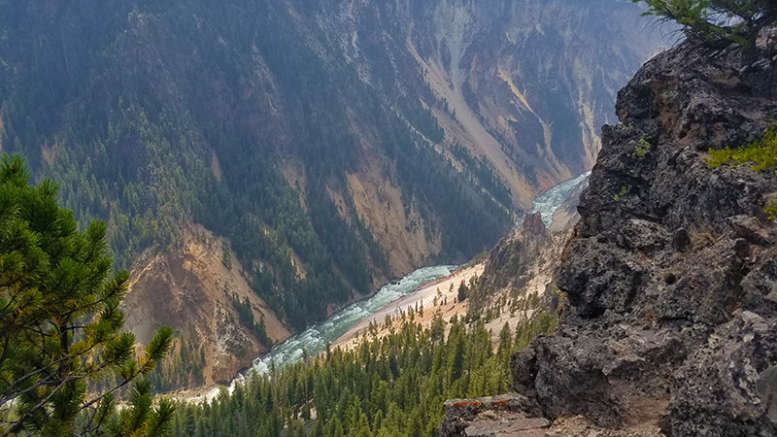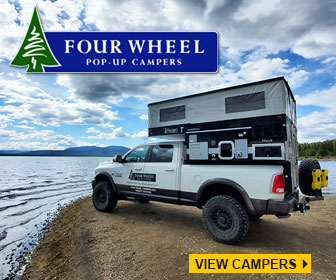In recent years, Yellowstone National Park has broken annual attendance records and 2016 was no exception with the park receiving 4.2 million visitors. Most of them only experience the grandeur of our nation’s oldest national park through a windshield. A few visitors take to some of the 900 miles of trails for a day hike of which there are many; Fairy Falls, Purple Mountain Trail, Mount Washburn or Undine Falls just to name a few. Not many actually experience the wilderness of Yellowstone Park by securing a permit and camping in the backcountry. With a little planning, you can select your dream trip and have your permit approved for next summer and leave the crowds behind.
Yellowstone is bigger than Delaware and the District of Columbia combined with room for a couple of small European Nations. Narrowing down a wilderness of this magnitude to an excursion of a night or three is a chore. A great overnight hike (which can be done in a swift day) is the 7 Mile Hole Trail (Actually 5.1 miles from Canyon Village). Backpackers can hike into the Yellowstone River Canyon and experience walking beside active thermal areas, breathtaking scenery and even solitude.
There are only three campsites in the canyon here and while all of them are fine, of course the one at the end of the trail (4C3) is my favorite. While there are Cutthroat Trout in the River, there is also simply enjoying the roar of a wild river while looking up at the colorful canyon walls.
While it is possible to walk into any park service backcountry permit office like Lake or Canyon and secure a last minute permit, selecting a hike and planning ahead may enrich your experience. I am a proponent of Plan: No Plan, but not while using the crowded roads and hotels of Yellowstone Park. Many a tourist has been forced to drive an extra couple of hours to Cody or West Yellowstone due to not properly planning their hotel stays, most of which are booked a year in advance. Besides, you may want to pamper yourself at Lake Hotel’s dining room and soak up the luxury of the newly renovated hotel rooms before sleeping on the ground… and after! There are also rustic cabins at Lake Lodge much cheaper than the upscale hotel and he view from Lake Hotel or Lake Lodge is beautiful.
First, consider what area of Yellowstone to explore. South of Yellowstone Lake is the most remote region in the lower 48 states. There are backcountry campsites there and the shuttle at Lake Marina is expensive, but they will give you a lift, even your kayaks if you want to explore the south arm of the Lake. The Grand Canyon of the Yellowstone is beautiful and very accessible or you can take to the remote trails such as Pelican Valley Trail between Yellowstone Lake and the Lamar River Valley, ground zero of the wolf re-introduction.
A portion of the park’s 300+ backcountry campsites may be reserved in advance. Reservations are accepted from January 1 to October 31 of each calendar year. Reservations received by March 31 will be processed in random order starting April 1. Reservations received on or after April 1 will be processed in the order they’re received after the random lottery is complete. Visit the National Park Service website. From there, download a backcountry permit application (PDF) and with a park service map or some internet searches, start planning your adventure. Requests for reservations must be submitted by mail, fax, or in person but you will receive a confirmation notice (not a permit) by email. This confirmation notice must be converted to the actual permit not more than 48 hours in advance of the first date on your itinerary.
So, beat winter blues by planning your backcountry hike and plan to mail it in March. In May you will have your reservation secured. Then, you can pack and dream of your upcoming adventure. Keep in mind that you must take your copy of the reservation issued to you to a backcountry office to be signed within 48 hours of your permit start date and by 10:00 A. M. on the morning of your reservation. You have to sit through the informative “bear video” which provides information on bears, digging cat holes and food storage. Then, a park ranger will review your permit which you can sign and then you are on your way.
Keep in mind that streams in June can be torrents of high wide and cold water presenting a crossing hazard. Those streams will barely require jumping across in August. By July, overnight lows are usually above forty degrees and fair weather is the norm until the first snow usually in mid-September.
You might also want to consider a guided Yellowstone Pack Trip.
Yellowstone is an amazing place especially once you hit the trails and the backcountry is waiting, so start planning your trip now and reap the rewards of leaving the crowds behind.


